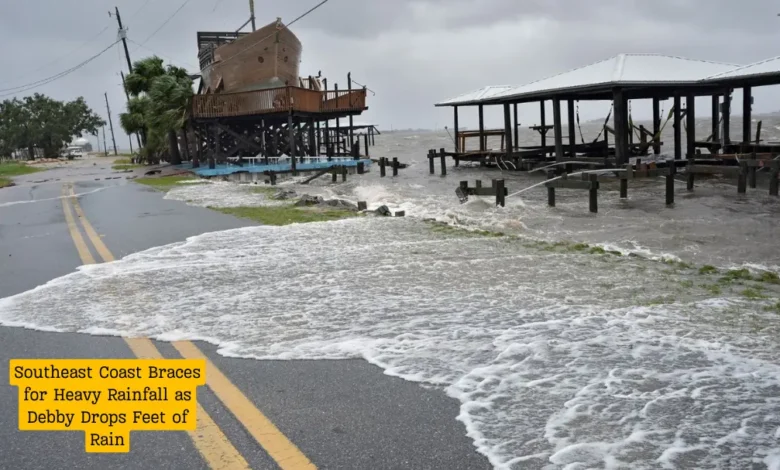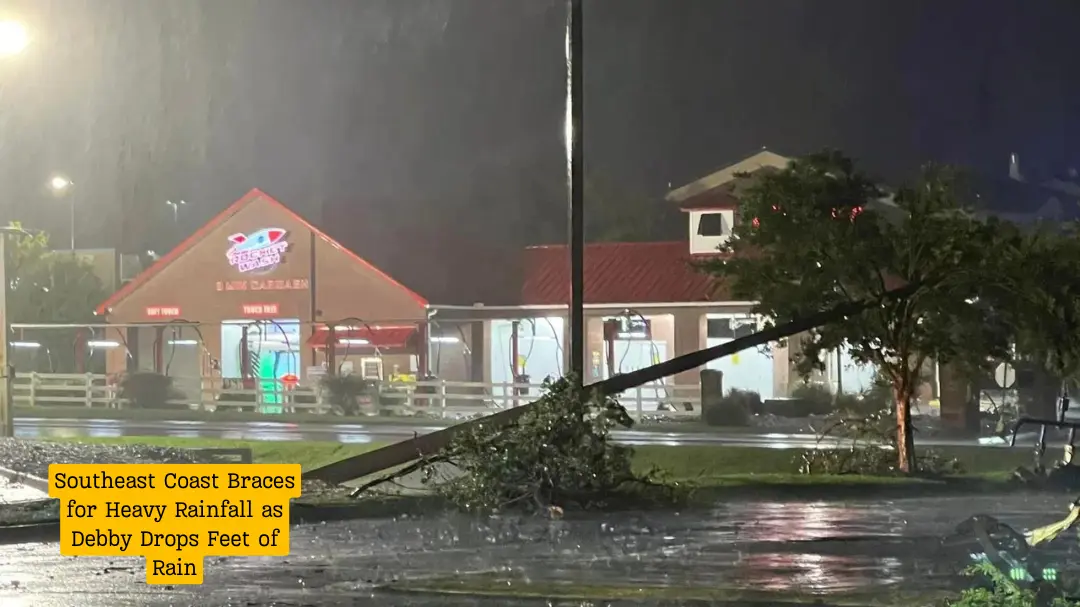Southeast Coast Braces for Heavy Rainfall as Debby Drops Feet of Rain
As Tropical Storm Debby intensifies, the Southeast Coast is bracing for significant heavy rainfall, with predictions of feet of rain falling in some areas. The storm is set to have a considerable impact on the region, leading to widespread preparations and warnings. Here’s an in-depth look at the situation and what to expect as Debby makes its way across the Southeast.

Tropical Storm Debby: What We Know
Tropical Storm Debby has quickly evolved into a significant weather event, bringing with it the potential for severe flooding and other hazards. The storm’s development and current trajectory are raising concerns about its impact on the Southeast Coast.
Key Facts About Tropical Storm Debby
- Intensity and Movement: Debby has strengthened over recent days, with its trajectory indicating a path that will bring it directly over the Southeast Coast. The storm is expected to continue intensifying, with heavy rainfall and strong winds being major concerns.
- Rainfall Projections: The National Weather Service has issued warnings for substantial rainfall, with estimates suggesting that some areas could receive several feet of rain. This volume of rain poses a serious risk of flooding, particularly in low-lying and vulnerable regions.
- Wind and Storm Surge: In addition to heavy rain, Debby is bringing strong winds and a potential storm surge that could exacerbate flooding issues along the coast. Coastal areas are at risk of significant inundation due to the combination of high winds and storm surge.

Impacts on the Southeast Coast
The heavy rainfall from Tropical Storm Debby is expected to have widespread impacts across the Southeast Coast. From flooding to power outages, the storm is set to disrupt daily life and pose challenges for residents and authorities alike.
Flooding Risks
- Urban Flooding: Cities and towns along the Southeast Coast are preparing for significant urban flooding. Streets, homes, and businesses could experience flooding due to the intense rainfall and overwhelmed drainage systems.
- Rural and Low-Lying Areas: Rural areas and those situated in low-lying regions are at an increased risk of severe flooding. Residents in these areas are being advised to take precautions and prepare for potential evacuations.
- Infrastructure Strain: The heavy rains could strain infrastructure, leading to potential road closures, damage to buildings, and disruptions to essential services. Emergency services are on high alert to respond to any issues that arise.

Safety Measures and Preparations
Residents along the Southeast Coast are advised to take several precautionary measures to stay safe during the storm. Here are some key recommendations:
- Emergency Kits: Prepare an emergency kit with essential supplies, including non-perishable food, water, medications, and batteries. Ensure that you have enough supplies to last for several days in case of power outages or disruptions.
- Evacuation Plans: Familiarize yourself with local evacuation routes and plans. If instructed to evacuate, do so promptly to avoid being caught in hazardous conditions.
- Stay Informed: Keep up to date with weather alerts and advisories from local authorities. Monitor reliable sources for the latest information on the storm’s progress and any emergency instructions.
- Protect Your Property: If possible, secure your property by elevating valuable items and sealing any areas that could allow water to enter. Clear gutters and drains to help manage excess water.
Looking Ahead
As Tropical Storm Debby moves through the Southeast Coast, residents and officials will continue to monitor the situation closely. The storm’s intensity and impact are subject to change, and it is crucial to remain vigilant and prepared.





